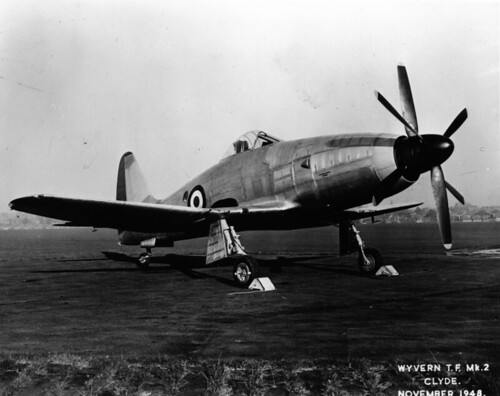Another notable first flight anniversary taking place in December is that of the unique Westland Wyvern. The prototype first took to the air on December 16th 1946.
The type went through a number of design and powerplant changes early, initially planned to have he engine behind the pilot, in a similar set up to the Bell fighters of world war 2, later abandoned for a more traditional set up. Early versions were piston powered, with plans to use the huge Rolls Royce Eagle that would provide 3,500hp. This engine was ultimately in short supply at the time of early testing and was abandoned in favour of the more modern turboprop designs. It wasn’t until 1949 that a turboprop powered example of this design would fly again with a Rolls-Royce engine (the Clyde) that would not last to production.
In the end it was the Armstrong Siddely Python that would power the Wyvern, driving the impressive contra-rotating props, with production variants rolling off the production line in 1953 and the aircraft entering service shortly after. All in all 124 Wyvern’s were completed and remained in service until 1958.
When powered by the Python, the Wyvern had a top speed of 383mph and boasted a range of over 700 miles. Today only one example of this design remins, fittingly in the Fleet Air Arm Museum Collection. The museum’s example VR137 is one of the pre-production examples that never flew and features the Rolls Royce Eagle piston engine. It is remarkable that an example of what would otherwise be a relatively obscure, if impressive designs. The aircraft currently sits in the museum’s reserve collection in Cobham hall. As with the Albacore post, the colour photos here are from my own visit to the collection in 2018, while the archive photos are directly linked to the San Diego Air and Space Museum archive.


